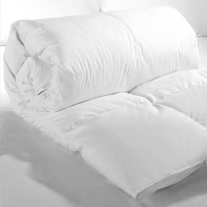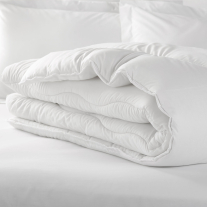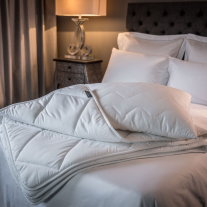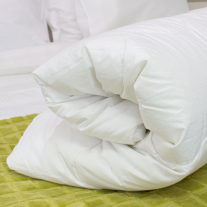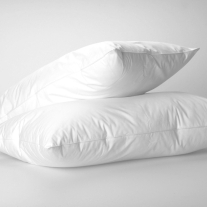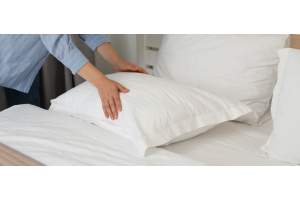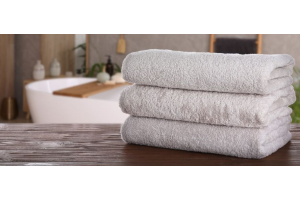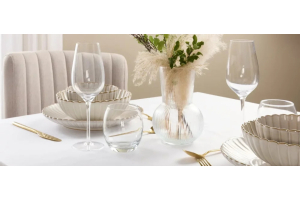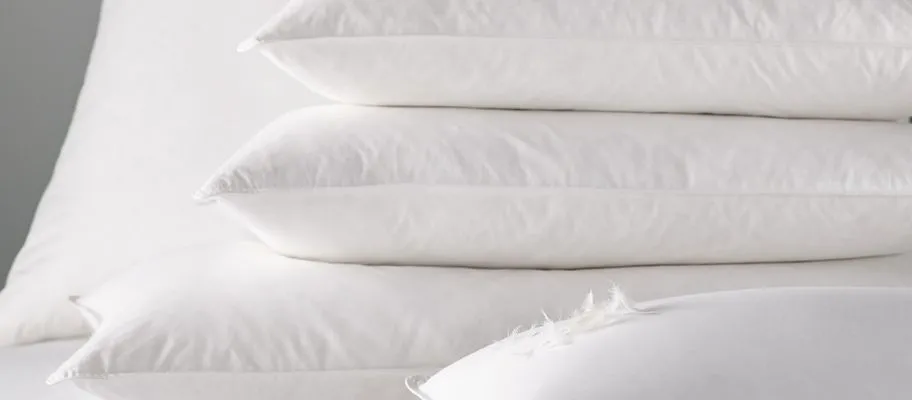We use cookies to give you the best possible experience. To accept cookies continue browsing, or view our Cookies Policy to find out more.
Synthetic Filled Bedding Vs. Natural Filled Bedding - The Types & Benefits
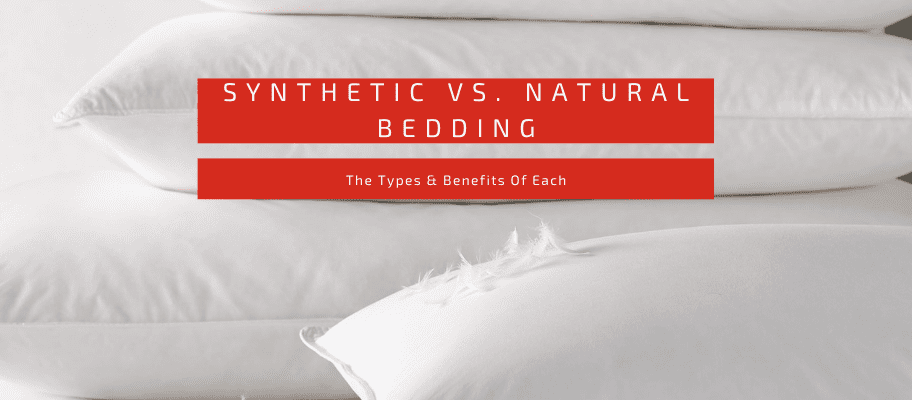
When it comes to filled bedding, there are two main types; synthetic filled bedding and natural filled bedding. But what exactly is the difference between synthetic bedding and natural bedding? The simple answer is that synthetic filled bedding is filled with synthetic materials such as polyester, while natural bedding is filled with natural materials such as bird feathers. But what are the benefits of each fill type and what should you be looking for to fit your unique preferences? Read on to find out!
The Features & Benefits of Natural Bedding
Natural filled bedding tends to be found more in high-end establishments such as five-star hotels. As such, you can expect something far more luxurious for your money. Of course, this means that natural filled bedding tends to be quite a bit more expensive than synthetic, but you do get the added benefit of a longer life.
- Features inherent “breathable” properties. It absorbs body moisture and releases when aired, resulting in better comfort.
- Natural filled bedding is more durable and can last up to three times longer than good quality synthetic filled bedding. A top quality natural filled duvet could last up to 30 years.
- Environmentally responsible choice and by-product of the food industry. It’s also biodegradable.
- A thorough washing of feather/down is required before its used to fill products. Feather and down has come from birds, so it can be quite dirty and greasy until it’s washed.
The Features & Benefits of Synthetic Bedding
Synthetic bedding is cheaper than it’s natural filled counterpart, but this value for money normally comes with a shorter lifespan. However, a good quality synthetic duvet, for example, that’s been looked after can easily last up to 10 years.
- Hypoallergenic properties. Synthetic bedding is more suitable for allergy sufferers (asthma, eczema, rhinitis dust sensitivity).
- The best choice if you’re buying on a budget.
- Wide variety of natural filled bedding available, as modern fills can be lightweight, soft and even capable of mimicking natural down without the high price tag.
- No washing of filling is required before use.
Types of Natural Bedding Filling
With natural fill types of bedding, you’re normally getting a duvet or pillow that’s filled with feathers, down, or a mixture of the two. It’s important to note that a feather filled product needs a heavier fill weight of feathers than you would of down to achieve the same warmth.
Down filled bedding is the most expensive option, with feather being the least expensive natural fill. Feather and down is therefore a good compromise in terms of comfort, warmth and price.
Down filled bedding features:
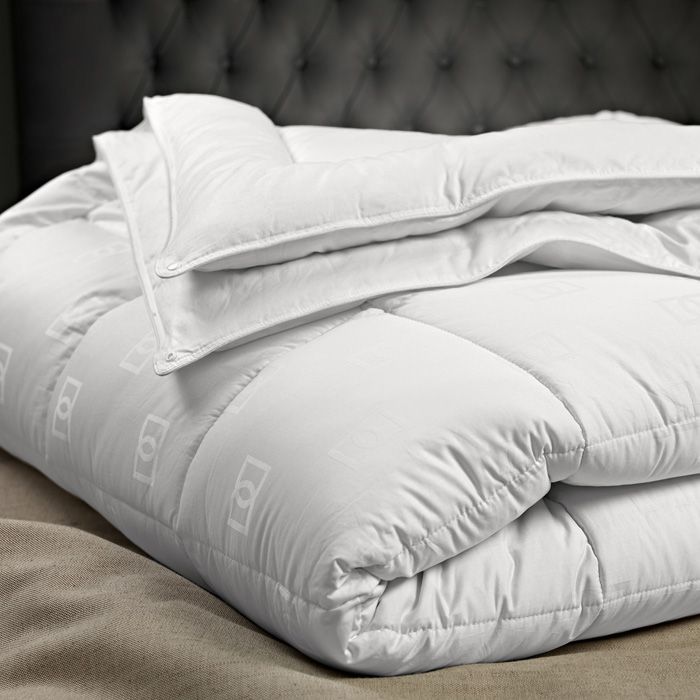
- Soft clusters from the breast of a duck or goose.
- No quills present, ensuring it’s a very soft filling.
- Down is the lightest of all natural fillings.
- The clusters in down filled bedding are very good at trapping air. This creates good insulation, which leads to warmer duvets.
Our pick of down bedding is our 10.5 tog 100% cotton goose down duvet, which will leave you feeling snug and warm all night.
Feather filled bedding features:
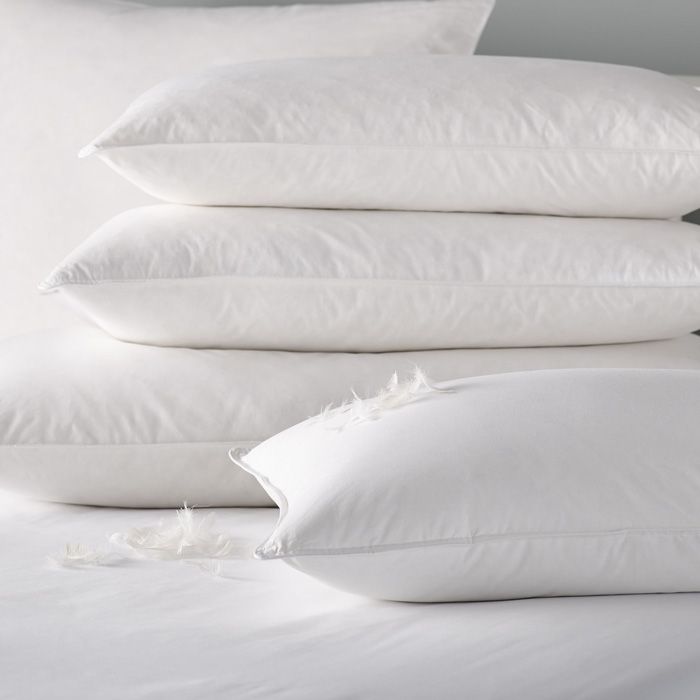
- Made from the covering of a duck or goose with quills and fine strands.
- Not as light or soft as down, meaning you get a much firmer pillow.
- The insulation properties (ability to trap air) of feather bedding is inferior to down bedding.
- More filling is required to achieve the same tog (warmth) rating of down.
- Offers a heavier weight and firm support.
Our 100% cotton duck feather pillow is a superb economical choice.
Feather and down filled bedding features:
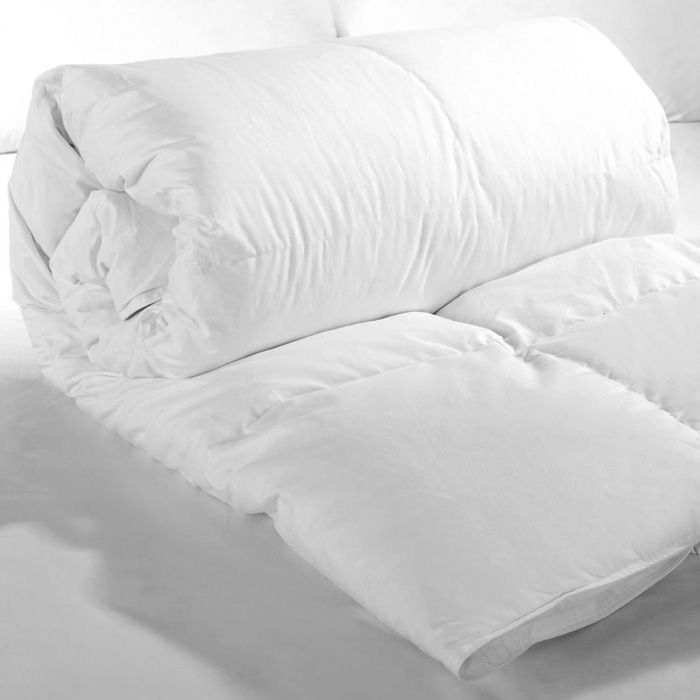
- Less expensive than 100% down bedding
- Combines the benefits of both fill types.
For a luxurious night's sleep, take a look at our 100% cotton goose feather and down duvet.
There are also two main types of feathers that are used in natural bedding; duck or goose feathers.
Goose feathers and down clusters are bigger than those of a duck and trap more air. As air is an insulator, it traps in heat, so less filling is required to give more warmth. On the other hand, more filling is required for duck feather and down filled bedding to achieve the same warmth as goose feather. This is because duck feather and down is smaller and traps less air, so a duvet make of duck ends up being heavier.
The heaviest size of duvet would be 100% duck feather, would is the preferred option for people who prefer a more tucked in feeling.
Different types of geese give different sizes of feather and down clusters, with geese from colder climates having bigger down clusters to keep them warm. Down from Hungarian, Canadian, Polish and Siberian Geese are considered to be premium quality because of the size of the clusters. As a result, these are the most expensive options on the market.
To sum up:
Goose feather/down features:
- Bigger feather and down clusters than duck.
- Less filling is required to give a higher tog (warmth) rating.
- The result is a lightweight but warm duvet.
Duck feather/down features:
- Smaller feather and down clusters than goose.
- More filling is required to give higher tog rating.
- The result is a heavier weight duvet to give equal warmth.
Types of synthetic filled bedding
There are various types of synthetic filling, most of which are made from polyester, but in different forms.
Polyester hollowfibre filling features:
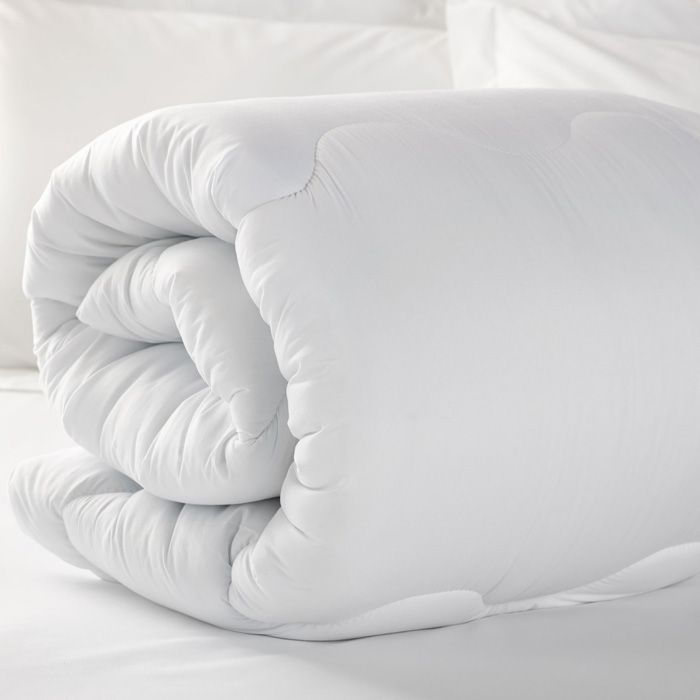
- A thread of filament with a hole running through the middle.
- Traps air more effectively than solid fibre, resulting in extra warmth.
- Harder to bend. Duvets have more structure and loft, while pillows maintain their loft.
Our non-allergenic hollowfibre duvet provides more warmth and comfort than standard solid fibre duvets.
Polyester microfibre filling features:
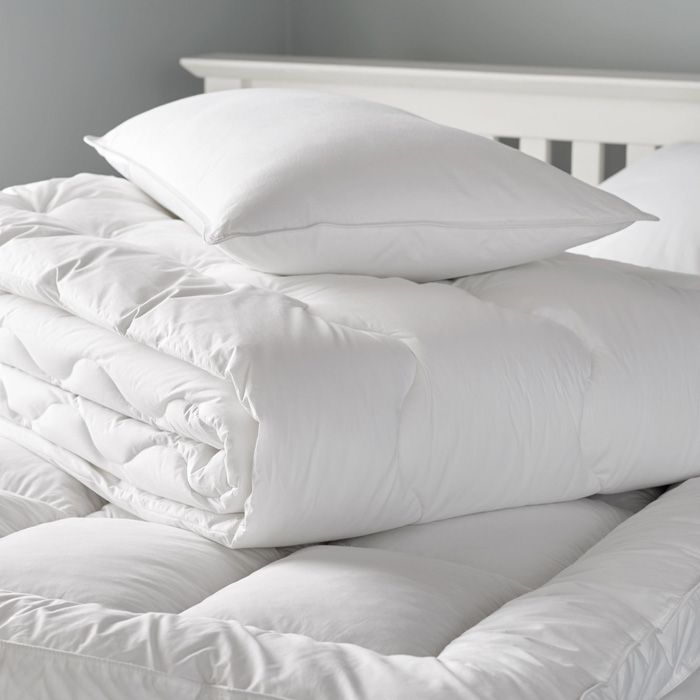
- Extremely fine fibres with a soft, silky feel.
- Traps air to provide a very warm, soft and light filling.
- Can be blended with hollowfibre to firm up, reduce flattening and improve loft recovery.
- Microfibre filled duvets replicate properties of natural down, giving warmth without weight.
- Synthetic pillows can go flat over time, so they are given a higher fill weight to prolong their lifespan.
Our 100% cotton microfibre filled duvet gives a near to natural feel.
Ball fibre pillow filling features:
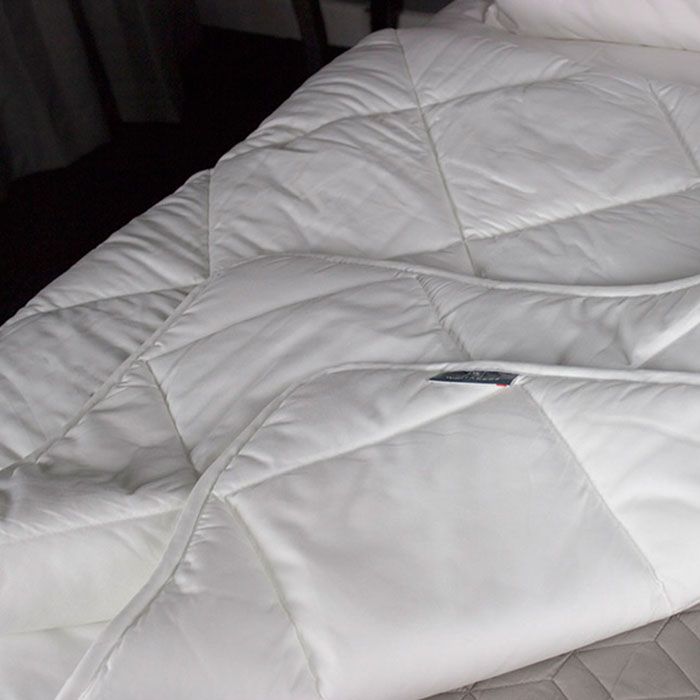
- Clusters of polyester fibres are formed into balls during manufacture.
- Superior recovery properties.
- Fibre clusters move around freely in the pillow, making sure the pillow corners are filled and allowing you to easily plump it into shape.
- Less likely to clump and performs well with repeated washes.
Take a look at our cluster fibre duvet, which also features flame retardant protection.
Spiral hollowfibre filling features:
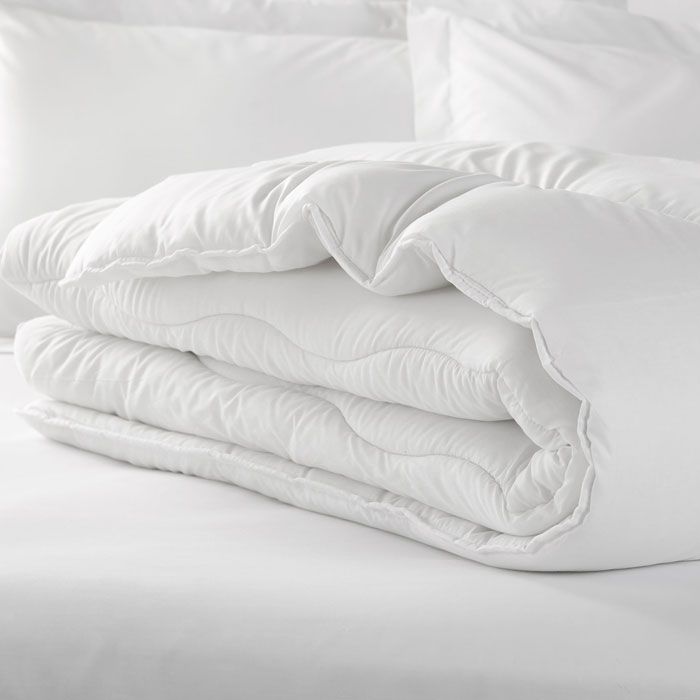
- Hollowfibre with a spiral spring shape.
- Keeps pillows and duvets plump over their lifespan.
- Provides added loft and traps more air, giving extra warmth when used in duvets.
Try our hollowfibre spring back duvet for a duvet that has a lightweight and bouncy filling.
Need more help in choosing the right bedding? Check out our hotel bedding buying guide or our hotel pillows buying guide. View our full range of bedding.


